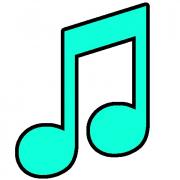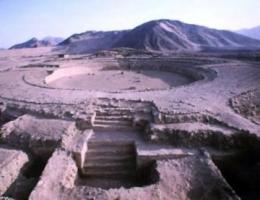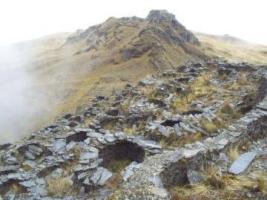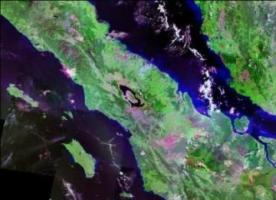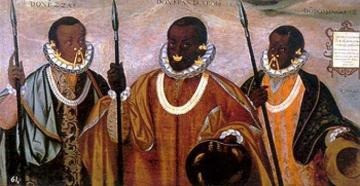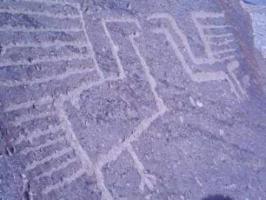Copy Link
Add to Bookmark
Report
The Sound Site Newsletter Issue 10

---------------------------------------------------------------------
| The Sound Site Newsletter |
| |
| Issue #10 Sept/Oct 1992 (Y) |
---------------------------------------------------------------------
| Copyright (C) 1992 by David Komatsu All Rights Reserved. |
---------------------------------------------------------------------
| This may be distributed to bulletin boards, FTP sites or other |
| media as long as there is no charge to receive the newsletter |
| o Submissions for next issue being accepted now |
---------------------------------------------------------------------
Note from the Editor
--------------------
Here is the 10th edition of the Sound Site newsletter. I would like to
welcome the many college students and professors back from summer. You
will be happy to note that a USENET newsgroup comp.sys.ibm.pc.soundcard
has been created for the discussion of soundcards. Well enjoy this
issue will focus on several FAQL's (Frequently Asked Question Lists)
which provide much information.
We are looking for column authors as well as a programming expert
to start a programmers corner in the Sound Newsletter. If you
would like to do this or add any other input please contact me.
Please use the two addresses below to send comments and
submissions to the Sound Newsletter.
sound@ccb.ucsf.edu
davek@uhunix.uhcc.hawaii.edu
The Sound Newsletter is now posted to comp.sys.ibm.pc.soundcard as
well as comp.sys.ibm.pc.misc and rec.games.ibm.pc.misc. We are also
a part of SB-NET. See the bottom for a list of BBS and FTP sites
that carry the Sound Newsletter.
I regret that I can no longer maintain a large mailing list if anybody
is willing to help set up one let me know. The sound newsletter is
still mailed out to FTP site admins, BBS operators, program authors,
and contributors. If you do not have access to newsgroups or FTP sites
then I'll try and accommodate you also.
-----> Dave
In this issue
-------------
o Special Thanks
o Do you want to announce a new product?
o Feature Articles & News
o A Look at Frequently Asked Question Lists
o Pro Audio Spectrum
o Audio Guide
o Gravis Ultrasound
o Sound Bits
o CD-Box v2.11 (Update)
o New Programs and Updates
o Anonymous FTP sound Sites
Special thanks to the following for supporting the Sound Newsletter
-------------------------------------------------------------------
Charles A. Thompson : PAS 16 FAQL
(thompson@ukanvm.cc.ukans.edu)
Guido Van Rossum : Audio Formats FAQL
(guido@cwi.nl)
Mike Moffat : Feature Article
Jim Oldroyd
(jr@inset.com) : Saffron FTP Site Admin
And to all the FTP sites and bulletin boards carrying the Sound
Newsletter and of course all the dedicated readers who make it worth
the effort.
Do you want to announce a new product?
---------------------------------------
If you have written a SHAREWARE, FREEWARE, or PUBLIC DOMAIN program
that is designed to play sound files, is a multimedia demo or
is a sound demo please e-mail me at sound@ccb.ucsf.edu. We can
feature your program in the Sound Newsletter as well at trickle
it to our various FTP sites. If you want your program featured
please include a brief description of the program.
Alternatively you can mail all sound programs to me on a 3.5" disk Low
or High Density to:
David Komatsu
Sound Program Submission
4826 Likini Street
Honolulu, HI 96818
Feature Article & News
----------------------
Well unfortunately we do not have a feature article for this issue so I
would like to take the time to answer one of the most asked questions that
I see floating around on bulletin boards.
Where can I find MOD files?
The two "best" sites for MOD files are as follows:
saffron.inset.com (192.94.75.2)
/pub/sound/samples/mod
/pub/sound/samples/newmods
/pub/sound/samples/pro-mods
ftp.brad.ac.uk (143.53.2.5)
/misc/mods
/incoming/mods
Finally I would like to take a moment to preview the next issue and also
ask for your help. The Sound Newsletter #11 will be featuring multimedia
demos. All of which I hope to have available on saffron. Currently among
others saffron stocks Cronolog and Unreal. If you know of any other
demos or would like to write a review of a demo please contact me. All
help is much appreciated.
Frequently Asked Questions Lists (FAQL)
----------------------------------------
There is so much information that exchanges hands on bulletin boards
and internet. Most of this information is exchanged through newsgroups
or forums or special interest groups. These groups gain new readers
everyday and many times the questions asked begin to repeat themselves.
Therefore Frequently Asked Questions Lists were devised. These lists
contain tremendous amounts of information and help reduce traffic.
It is always recommended that before posting a question a user look
through the FAQL because it may already contain the answer. I want
to take a few minutes to feature several of these lists. I have clipped
some pieces out to give an idea what they look like. All FAQLS are
available on our site at SAFFRON.INSET.COM. BBS operators may also
ask for a copy via E-mail for inclusion on their board.
***********************************************************
* FAQL's available on Saffron.inset.com pub/sound/faql *
***********************************************************
(*) == Featured in this issue
audio26.faq Audio File Formats (9/92) by Guido Van Rossum (*)
card.faq List of Known Sound Cards (9/92) by Dave Cole
proaudio.faq Pro Audio Spectrum FAQL 1.0 (8/82) by Charles A Thompson (*)
Media Vision FAQLS
mpcup.faq Media Visions multimedia PC upgrade kits (1/92)
proaud.faq Pro Audio Spectrum (1/92)
proplus.faq Pro Audio Spectrum Plus (7/92)
thun.faq Thunder Board (1/92)
If you are maintaining a FAQL or know of any other FAQL's I would
appreciate it if you could mail me at "davek@uhunix.uhcc.hawaii.edu".
I would like to keep Saffron updated with these FAQLs.
---------------------------------------------------------------------
The Pro Audio Spectrum FAQL is maintained by Charles A. Thompson who
can be reached at: thompson@ukanvm.cc.ukans.edu. The Soundletter
thanks Charles for allowing us to print the below pieces of his
excellent FAQL.
----------------------------------------------------------------------
| The Pro Audio Spectrum Frequently Asked Questions List |
| Version 1.0 |
| August 1992 |
----------------------------------------------------------------------
1) What are the PAS/+/16?
2) What are the specs for the PAS-16?
3) Are the PAS cards Soundblaster and Adlib compatible?
4) How does the PAS-16 compare to the Soundblaster Pro?
5) How does the PAS-16 compare to the Gravis Ultrasound?
6) Will I have problems using a PAS card with a fast computer (486)?
7) Will OS/2 drivers be available for the PAS cards?
8) What software comes with the PAS-16?
9) Is setting up a PAS+ or PAS-16 hard?
10) I have installed my PAS+ or PAS-16, but the sound from games is
very low and hard to hear. What's wrong?
11) Is there a development kit available for the PAS cards?
12) How can Media Vision, the maker of the PAS cards, be reached?
13) How good is the quality of various sampling rates?
14) How much memory does the PAS-16's MVSOUND driver take up?
15) Where can I purchase a PAS-16 or PAS+ card?
16) What is the Media Vision Pro-16 Multimedia System package and what
does it contain?
17) What SCSI CD-ROM drives are supported by the PAS-16 and PAS+?
------------------------------------------------------------------------
1) What are the PAS, PAS+, and the PAS-16?
The PAS was the original PAS card. It is capable of FM synthesizing,
and digital sound. It can do 8 bit digital sampling and 8 bit digital
playback (I don't know at what rate). The PAS has shielding built
into it that eliminates background noise that can be created by many
of the components of computer systems (hard drives for example).
The PAS+ is the new version of the old PAS. I don't believe the PAS
is for sale anymore, as the PAS+ has probably replaced it. The PAS+
is capable of FM synthesizing, and digital sound. It has the
shielding that the original PAS had. It can do 8 bit digital
sampling and 16 bit digital playback.
The PAS-16 is currently the most advanced sound card in the Pro Audio
Spectrum line. It is capable of FM synthesizing, and digital sound.
It can do 16 bit digital sampling and 16 bit digital playback. It
has the shielding that was present in the original PAS.
----------------------------------------------------------------------
2) What are the specs for the PAS-16?
Here are the specs for the PAS-16. I understand that the specs for
the PAS+ are identical, except that the PAS+ can only do 8 bit
sampling, and requires you to specify when you want SB compatibility
mode on or off.
(Sorry, I don't have specs for the original PAS.)
Compatible with the following sound standards:
SoundBlaster (version 1.5--currently fine for any software)
Adlib
Thunderboard
Pro Audio Spectrum
MPC
Windows with Multimedia
Windows 3.1
True 16 bit stereo sound
--16 bit stereo playback and recording (16 bit linear DAC)
--Sampling/playback at 8, 12, and 16 bit PCM 4kHz-44kHz in stereo
--Dynamic filtering 2Hz-22kHz programmable
--ADPCM compression (2:1) and decompression (2:1, 3:1, 4:1) mono mode
--Microphone, external line-in, and CD-audio inputs (enables you to
make CD-quality 16-bit recordings from a variety of sources)
--Shielded circuitry and dynamic filtering for low noise and clear
sound
Advanced 20 Voice Stereo Synthesizer
--Yamaha YM262 (OPL-3) synthesizer
--4 operator FM synthesized sound for true stereo
--16 bit FM DAC
--General MIDI compatible
Audio Mixing
--Internal synthesizer (stereo)
--Digital audio (stereo)
--CD audio (stereo)
--External line-in (stereo)
--Microphone
--PC speaker
--10 channels with stereo enhance
Volume Control
--Master volume: 0 to -62dB (1 dB/step)
--Input mixer +1 to -60dB (2dB/step)
Signal quality (1 V p-p reference)
Dynamic range and signal to noise
--Synthesized and mixed audio: 85 dB
--Sampled audio PCM: 90 dB
--Total harmonic distortion: 0.05%
Frequency Response
--30 Hz - 20 kHz (+- 3 dB)
Audio Outputs
--Drive level: 11.5 V (p-p)
--Power: 4 watts per channel (software controllable volume, bass, and
treble)
--Load impedance: will drive 4 or 8 ohm speakers
--Output connections: stereo mini jacks (1/8 inch)
(same with line in)
16 bit PC Interface
--16 bit DMA
--Selectable IRQ (2-7, 10-15)
--Selectable DMA (0-3, 5-7)
--Software selectable DMA and IRQ settings with auto configuration
MIDI Interface (Requires Optional MIDI Mate)
--Full duplex MIDI port (can record and playback at the same time)
IBM Standard Joystick Port
High Performance SCSI Interface (Requires Optional SCSI Cable Kit)
--Supports CD-ROM drives, SCSI hard drives, removable/erasable optical
drives or removable cartridge drives
--690 kB per second
Connectors
--Internal CD-Audio Connector at J5 is a 5-pin header connector,
0.100" space header, pin 1=ground, 2=right in, 3=ground, 4=left in,
5=ground.
--The MIDI/Joystick Port is a D-15S connector type. The pinouts are:
1 +5VDC
2 JOYSTICK 1 FIRE 1
3 JOYSTICK 1 X
4 GROUND
5 GROUND
6 JOYSTICK 1 Y
7 JOYSTICK 1 FIRE 2
8 +5VDC
9 +5VDC
10 JOYSTICK 2 FIRE 1
11 JOYSTICK 2 X
12 MIDI OUT (GROUND on MIDI Mate and Thunder Board)
13 JOYSTICK 2 Y
14 JOYSTICK 2 FIRE 2
15 MIDI IN (+5VDC on MIDI Mate and Thunder Board)
System Requirements
--IBM PC, AT, 80286, 80386, 80486, or 100% compatible
--640k RAM memory
--DOS 3.1 or higher
--Hard disk with 6 MB free space
--16 bit slot (card measures 7 7/8" by 3 7/8")
--External speakers (4 to 8 ohm)
Optional
--Headphones: 1/8 inch stereo phone plug
--Microphone: 1/8 inch mono plug, supports 600 to 10K ohm dynamic
--External amplified speakers
3 Year Limited Warranty
----------------------------------------------------------------------
12) How can Media Vision, the maker of the PAS cards, be reached?
Contact Media Vision Technical Support for technical assistance on:
Stereo Studio F/X, SP Spectrum, Software Controlled Mixer (PAS.EXE),
TrakBlaster Pro, Monologue v3.0 for DOS, Music and Sound Effects
Library, AudioMate, Windows Drivers and Pocket Tools.
If you need a software update, a Return Material Authorization (RMA)
number for a defective product, RMA status, or have any non-technical
customer-related issues, contact Customer Service.
Media Vision, Inc.
47221 Fremont Blvd.
Fremont, CA 94539
Main: (800) 348-7116 or (510) 770-8600
Sales: (800) 845-5870
Tech Support &
Customer Service: (800) 638-2807 or (510) 770-9905
FAX: (510) 770-8648 or (510) 770-9592
BBS: (510) 770-0968 2400 baud (8 bits, no parity, 1 stop bit)
(510) 770-1661 2400 baud (8 bits, no parity, 1 stop bit)
(510) 770-0527 9600 baud (8 bits, no parity, 1 stop bit)
Assign your own account name and password.
Compuserve: GO MEDIA VISION or send mail to 75300.2722@Compuserve.Com.
Upgrade information: (800) 283-1596 extension 100
----------------------------------------------------------------------
24) I have some questions about TrakBlaster Pro.
(TrakBlaster Pro troubleshooting)
--While running TBPRO, a MOD file plays for 20 seconds then abruptly
stops and system hangs up.
This is caused by a DMA conflict. Make sure the PAS-16 section is not
set for DMA 1 unless the SB compatibility has been disabled.
--Does TBPRO support high-order DMA and IRQ?
No. TBPRO only supports DMA 1,3 and IRQ 2,3,5,7.
Hope this gives you an idea. The entire FAQL can be found on SAFFRON
in the: directory
The Audio Formats FAQ is maintained by Guido van Rossum (guido@cwi.nl).
It is an EXCELLENT resource for audio formats and includes easy to
understand explanations as well as indept technical notes on certain
formats. To all using SUN's or NeXT machines to play sounds this is
a MUST read file. The Soundnewsletter would like to thank Guido Van
Rossum for allowing the following reprint. The entire FAQ can be found
on SAFFRON.
FAQ: Audio File Formats (version 2.6)
=====================================
Table of contents
-----------------
Introduction
Device characteristics
Popular sampling rates
Compression schemes
Current hardware
File formats
File conversions
Playing audio files on UNIX
Playing audio files on micros
The Sound Site Newsletter
Posting sounds
Appendices:
FTP access for non-internet sites
AIFF Format (Audio IFF)
The NeXT/Sun audio file format
IFF/8SVX Format
Playing sound on a PC
The EA-IFF-85 documentation
US Federal Standard 1016 availability
Creative Voice (VOC) file format
RIFF WAVE (.WAV) file format
Popular sampling rates
----------------------
Some sampling rates are more popular than others, for various reasons.
Some recording hardware is restricted to (approximations of) some of
these rates, some playback hardware has direct support for some. The
popularity of divisors of common rates can be explained by the
simplicity of clock frequency dividing circuits :-).
Samples/sec Description
5500 One fourth of the Mac sampling rate (rarely seen).
7333 One third of the Mac sampling rate (rarely seen).
8000 Exactly 8000 samples/sec is a telephony standard that
goes together with U-LAW (and also A-LAW) encoding.
Some systems use an approximation; in particular, the
NeXT workstation uses 8012.8210513 samples/sec.
(Can anyone explain why? SGI software calls this rate
"codec-rate".)
11 k Either 11025, a quarter of the CD sampling rate,
or half the Mac sampling rate (perhaps the most
popular rate on the Mac).
16000 Used by, e.g. the G.722 compression standard.
22 k Either 22050, half the CD sampling rate, or the Mac
rate; the latter is precisely 22254.545454545454 but
usually misquoted as 22000.
32000 Used in digital radio, NICAM (Nearly-Instantaneous
Companded Audio Multiplex [IBA/BREMA/BBC]) and other
TV work, at least in the UK; also some DAT machines
can do it. It is also the standard long play speed
for DAT non linear encoding.
44056 This weird rate is used by professional audio
equipment to fit an integral number of samples in a
video frame.
44100 The CD sampling rate. (Professional DAT also supports
this rate.)
Current hardware
----------------
I am aware of the following computer systems that can play back and
(sometimes) record audio data, with their characteristics. Note that
for most systems you can also buy "professional" sampling hardware,
which supports much better quality, e.g. >= 44.1 k 16 bits stereo.
The characteristics listed here are a rough estimate of the
capabilities of the basic hardware only (and even here I am on thin
ice, with systems becoming ever more powerful).
machine bits max sampling rate #output channels
Mac 8 22k 1
Apple IIgs 8 32k / >70k 8(st)
PC/Soundblaster 8 13k /22k 1
Atari ST 8 22k 1
Atari STe,TT 8 50k 2
Amiga 8 ~29k 4(st)
Sun Sparc U-LAW 8k 1
NeXT U-LAW,8,16 44.1k 1(st)
SGI Indigo 8,16 48k 4(st)
Acorn Archimedes ~U-LAW ~180k 8(st)
Sony RISC-NEWS 8, 16 37.8k ?(st)
VAXstation 4000 U-LAW 8k 1
Tandy 1000/[TS]L 8-bit 22k 3
4(st) means "four voices, stereo"; sampling rates xx/yy are
different recording/playback rates.
All these machines can play back sound without additional hardware,
although the needed software is not always standard; only the Sun,
NeXT and SGI come with standard sampling hardware (the NeXT only
samples U-LAW at 8000 samples/sec from the built-in microphone port;
you need a separate board for other rates).
The new VAXstation 4000 series lets you PLAY audio (.au) files, and
the as-of-yet-unreleased package, DECsound, will let you do the
recording.
The SGI Personal IRIS 4D/30 and 4D/35 have the same capabilities as
the Indigo.
The new Apple Macs have more powerful audio hardware; the latest
models have built-in microphones.
Software exists for the PC that can play sound on its 1-bit speaker
using pulse width modulation (see appendix); the Soundblaster board
records at rates up to 13 k and plays back up to 22 k (weird
combination, but that's the way it is).
Here's an overview of popular file formats.
Self-describing file formats
----------------------------
extension, name origin variable parameters (fixed; comments)
.au or .snd NeXT, Sun rate, #channels, encoding, info string
.aif(f), AIFF Apple, SGI rate, #channels, sample width, lots of info
.aif(f), AIFC Apple, SGI same (extension of AIFF with compression)
.iff, IFF/8SVX Amiga rate, #channels, instrument info (8 bits)
.voc Soundblaster rate (8 bits/1 ch; can use silence deletion)
.wav, WAVE Microsoft rate, #channels, sample width, lots of info
.sf IRCAM rate, #channels, encoding, info
none, HCOM Mac rate (8 bits/1 ch; uses Huffman compression)
none, MIME Internet (see below)
.mod or .nst Amiga (see below)
Note that the filename extension ".snd" is ambiguous: it can be either
the self-describing NeXT format or the headerless Mac/PC format, or
even a headerless Amiga format.
File conversions
----------------
SOX
---
The most versatile tool for converting between various audio formats
is SOX ("Sound Exchange"). It can read and write various types of
audio files, and optionally applies some special effects (e.g. echo,
channel averaging, or rate conversion).
SOX recognizes all filename extensions listed above except ".snd",
which would be ambiguous anyway, and ".wav" (but there's a patch, see
below). Use type ".au" for NeXT ".snd" files. Mac and PC ".snd"
files are completely described by these parameters:
-t raw -b -u -r 11000
(or -r 22000 or -r 7333 or -r 5500; 11000 seems to be the most common
rate).
The source for SOX, version 5, was posted to alt.sources, and should
be widely archived. To save you the trouble of hunting it down, it
can be gotten by anonymous ftp from wuarchive.wustl.edu, in the
directory usenet/alt.sources/articles, files 5581.Z through 5585.Z.
(These files are compressed news articles containing shar files, if
you hadn't guessed.) I am sure many sites have similar archives, I'm
just listing one that I know of and which carries a lot of this kind
of stuff. (Also see the appendix if you don't have Internet access.)
A compressed tar file containing the same version of SOX is available
by anonymous ftp from ftp.cwi.nl [192.16.184.180], in /pub/sox*.tar.Z.
You may be able to locate a nearer version using archie!
Ports of SOX:
- The source as posted should compile on any UNIX system with 4-byte
integers.
- A PC version is available by ftp from ftp.cwi.nl (see above) as
pub/sox4*.zip; also available from the garbo mail server.
- The latest Amiga SOX (corresponding to version 5) is available via
anonymous ftp to wuarchive.wustl.edu, files
systems/amiga/audio/utils/amisox*. (See below for a non-SOX
solution.)
- Work is currently in progress to get SOX ported to VMS (watch
comp.os.vms for announcements).
Sun Sparc
---------
On Sun Sparcs, starting at SunOS 4.1, a program "raw2audio" is
provided by Sun (in /usr/demo/SOUND -- see below) which takes a raw
U-LAW file and turns it into a ".au" file by prefixing it with an
appropriate header.
NeXT
----
On NeXTs, you can usually rename .au files to .snd and it'll work like
a charm, but some .au files lack header info that the NeXT needs.
This can be fixed by using sndconvert:
sndconvert -c 1 -f 1 -s 8012.8210513 -o nextfile.snd sunfile.au
------------------------------------------------------------------------
Creative Voice (VOC) file format
--------------------------------
From: galt@dsd.es.com
(byte numbers are hex!)
HEADER (bytes 00-19)
Series of DATA BLOCKS (bytes 1A+) [Must end w/ Terminator Block]
- ---------------------------------------------------------------
HEADER:
=======
byte # Description
------ ------------------------------------------
00-12 "Creative Voice File"
13 1A (eof to abort printing of file)
14-15 Offset of first datablock in .voc file (std 1A 00
in Intel Notation)
16-17 Version number (minor,major) (VOC-HDR puts 0A 01)
18-19 2's Comp of Ver. # + 1234h (VOC-HDR puts 29 11)
- ---------------------------------------------------------------
DATA BLOCK:
===========
Data Block: TYPE(1-byte), SIZE(3-bytes), INFO(0+ bytes)
NOTE: Terminator Block is an exception -- it has only the TYPE byte.
TYPE Description Size (3-byte int) Info
---- ----------- ----------------- -----------------------
00 Terminator (NONE) (NONE)
01 Sound data 2+length of data *
02 Sound continue length of data Voice Data
03 Silence 3 **
04 Marker 2 Marker# (2 bytes)
05 ASCII length of string null terminated string
06 Repeat 2 Count# (2 bytes)
07 End repeat 0 (NONE)
*Sound Info Format: **Silence Info Format:
--------------------- ----------------------------
00 Sample Rate 00-01 Length of silence - 1
01 Compression Type 02 Sample Rate
02+ Voice Data
Marker# -- Driver keeps the most recent marker in a status byte
Count# -- Number of repetitions + 1
Count# may be 1 to FFFE for 0 - FFFD repetitions
or FFFF for endless repetitions
Sample Rate -- SR byte = 256-(1000000/sample_rate)
Length of silence -- in units of sampling cycle
Compression Type -- of voice data
8-bits = 0
4-bits = 1
2.6-bits = 2
2-bits = 3
Multi DAC = 3+(# of channels) [interesting--
this isn't in the developer's manual]
------------------------------------------------------------------------
Sound Bits
----------
DISCLAIMER: The Sound Newsletter provides no guarantee on the
performance of the software or products mentioned in this newsletter.
The information is provided to give the reader an idea on how the
products operate.
******************************
* CD Box v2.11 *
* written by Jeffrey Belt *
******************************
**********************
* CD-Box (shareware) *
**********************
CD-Box is a VGA & mouse player & playback shell to play music on an AdLib
or SoundBlaster card. It provides a common high-level interface to
multiple sound file formats (.CMF .MOD .MUS .ROL .VOC), with extras:
internal .CMF & .MOD support (with Pause), multiple song selection,
random selection, automatic handling of bank files, song files and song
lengths, playback from .ZIP files, and most all, nice graphics and
animation!
CD-Box v2.11 is a minor update to CD-Box v2.10, the previous net release.
Essentially keyboard support has been added, for the minority who still
have problem with mice. Also a 4-bar display has been added in .MOD
playback, and most command line parameters accept wildcards now
(removing and viewing songs in the database).
There is also another change, which may be unwelcome: CD-Box, starting
with version v2.11, has become shareware. The fee is low ($10), it only
is to offset the costs of development which are getting pretty high as
CD-Box gets more powerful (registering and buying stuff, even simply getting
info from the net). You don't HAVE to pay, only if you want
CD-Box to get even better (internal support for all formats, and support
for more) and maybe even get under Windows. You might also decide the
version you have is fine and not be bothered by your conscience, and so
not pay. It's your choice.
As an incentive, if you register, a volume control and the possibility of
skipping forward and backward within the song is available for .MOD
files (the lowest row of buttons flips over to reveal a new set).
Required: VGA (320*200*256 colors), AdLib or SoundBlaster
Recommended: Microsoft compatible mouse
I insist on user feedback. I currently am not on the net (CD-Box v2.11 has
been uploaded thanks to the editor of this excellent publication), this
is why your feedback via snail-mail is so important. I'm counting on
you!
Jeffrey Belt
7 rue de la Garenne
77240 - CESSON
FRANCE
CD-Box V2.11 appears on
Simtel 20
saffron.inset.com /pub/sound/players/cdbox211.zip
*****************************
* New Programs and Updates *
*****************************
Modedit v2.20 (Update)
---------------------
1.1 WHAT IS MODEDIT?
---------------------
ModEdit is a music editor/sequencer for the IBM PC family
that allows you to write music with 4 tracks of digitized
instrument sounds. The file format used is the "Amiga
Module" format. ModEdit can load and save Modules, meaning
that Modules created by other programs (even on other
computers such as the Amiga) can be used by ModEdit, and that
the Modules created by ModEdit can be used by any program
that can use Modules.
1.2 WHAT IS NEEDED TO RUN MODEDIT?
-----------------------------------
To run ModEdit, you need:
- An IBM or compatible, 640K recommended.
- The executable editor program MODEDIT.EXE.
To hear the music, you also need one or both of the
following:
- The resident module player MODRES.COM by Mark J. Cox,
which allows you to hear your music as you write it from
within ModEdit. (Included with ModEdit.)
- The external module player MODPLAY (MP.COM) by Mark J. Cox,
which allows you to play Modules outside the ModEdit
environment.
NOTE: To run MODPLAY or MODRES, you must have a 10 MHz or
faster machine.
saffron.inset.com /pub/sound/players/moded200.zip
WinMod Pro V0.02B2 by James Holderness (NEW)
--------------------------------------
WinMod PRO is a MOD file player for Windows using the multimedia
waveform audio services. It requires Windows version 3.1, and some sort
of soundcard that has an asynchronous waveform driver. Synchronous drivers
like the PC speaker and Adlib drivers are not really suited for MOD
file playing (as implemented in this program), although if you play
around with the settings described in the System Options section below,
you may be able to get them to work (sortof).
WinMod PRO should be able to play noisetracker, soundtracker, protracker
and screamtracker files. It is also able to play modules compressed with
the Windows COMPRESS utility. When scanning a directory, it only searches
for files with MOD, NST and STM extensions, or their compressed forms
(MO_, NS_ and ST_).
saffron.inset.com /pub/sound/players/wmp002b2.zip
New Mod files
-------------
eguale1.mod : Equale
fugueg.mod : Fuge in g (Classical)
guitarous.mod : Guitarous
hawaiian.mod : The Hawaiian Wedding Song
tocatta.mod : Tocatta in Fugue (Classical)
saffron.inset.com /pub/sound/samples/newmods
------------------------------
| Anonymous Sound FTP SITES |
------------------------------
To connect to an anonymous FTP site do the following (we are using the
sound-site as an example)
ftp saffron.inset.com or ftp 192.94.75.2
name: anonymous
password: <email-address>
If you know of any other Sound ftp sites please forward the information
this way. If you know the administrators of the below sound sites or
you are in charge of one of the below sound sites please e-mail me so
we can join efforts. Your input to this sound-list would be greatly
appreciated. (*) denotes sites carrying Sound Newsletter & back issues.
Name IP# What
------------------------------------------------------------------------
abcfd20.larc.nasa.gov 128.155.23.64 amiga sounds
calvin.nmsu.edu 128.123.35.150 Sounds from Tiny Toons
dir: pub/toon-gifs/sounds
ccb.ucsf.edu 128.218.1.13 (.snd), players. (*)
directory: Pub/Sound_list
garbo.uwasa.fi 128.214.87.1 (.stm), players (*)
ems.media.mit.edu 18.85.0.104 csound
ftp.brad.ac.uk 143.53.2.5 misc/mods incoming/mods
ftp.ee.lbl.gov 128.3.112.20 sounds (au files)
directory: sound/*.au
saffron.inset.com 192.94.75.2 SoundBlaster/Adlib, (*)
(.mod, .stm, .snd) [Rogue]
sciences.sdsu.edu 130.191.224.2 sounds
snake.mcs.kent.edu 131.123.2.222 SoundBlaster & Adlib stuff
directory: pub/SB-Adlib
sumex-aim.stanford.edu (.snd) files
terminator.cc.umich.edu 141.211.164.8 sounds and misc archive site
ucsd.edu 128.54.16.1 sounds for sparc
uop.uop.edu 138.9.200.1 Modplay
xanth.cs.odu.edu 128.82.8.1 startrek sounds
dir: pub/star-trek/stsounds.
wsmr-simtel20.army.mil 192.88.110.20 Sound players (*)
Attention Bulletin Board owners and FTP site administrators
-----------------------------------------------------------
You can carry the sound newsletter on your site FREE of charge. For
FTP sites please contact me at: sound@ccb.ucsf.edu. You can either
obtain it from one of our sites or we can mail it to you on Fido Net,
CompuServe or Internet.
The following Bulletin board systems carry the Sound Newsletter and
Back Issues. The (*) boards also specialize in multimedia.
United States
Board Speed Phone Sysop
-----------------------------------------------------------------------
Graphics Plus 38.4K (808) 531-6509 Eric Lui
Network One Systems
Fantasy Island 9600 (HST) (808) 689-0040 Ken Ludwig
Listening Post 9600 (HST) (808) 689-8583 Lou Braun
Midnight Run BBS (*) 2400 (809) 720-3833 Luis R. Garcia
(Fido 1:367/27)
The Patchbay (*) 38.4K (Dual) (818) 441-3965 Daniel Bise
Round Table BBS 2400 (312) 777-9480 Kevin Keyser
Snarf's Music Studio BBS 14.4K (HST) (708) 290-9993 Colin Crisanti
Abroad (All contain sound programs also)
Board Speed Phone Sysop
--------------------------------------------------------------------
1B Systems Managment Ltd. 19.2k (604) 753-9960 Ken McVay
(Waffle/XENIX)
1B Systems Managment Ltd. 2400 (604) 753-9964 Ken McVay
(Waffle/XENIX)
1B File request from ftn 14.4K (604) 754-2928 Ken McVay
FrontDoor 2.0/c
(IMEx 89:681/1) (604) 754-2928
(HST 14.4)
BCG-Box 9600 +358 21 404 036 Kim Heino
V32/42/42bis, MNP2-5
(FidoNet: 2:222/151.0)
Einstein BBS 2400 +47 4 53 46 18 Kjetil Krag
Greyhawk BBS (UK) 9600 +44 332 756414 Alan Coates
(Fido: 2:250/404)
System - X 9600 +(61-2) 368-1320 Scot Art
(Fido: 3:712/634)
--------------------------------------------------------------------------
| Introducing the sister sounds sites, twice as good, twice as fun |
|-------------------------------------------------------------------------
| ccb.ucsf.edu: 15 megs of SND files for REmac and PlayBwc |
| saffron.inset.com: 80+ megs of STM, MOD, SND and MultiMedia |
|-------------------------------------------------------------------------
| sound@ccb.ucsf.edu | Editor the the Sound Newsletter |
| davek@uhunix.uhcc.hawaii.edu | Spreading the word about the |
| -----> Dave | latest in sound technology |
--------------------------------------------------------------------------








